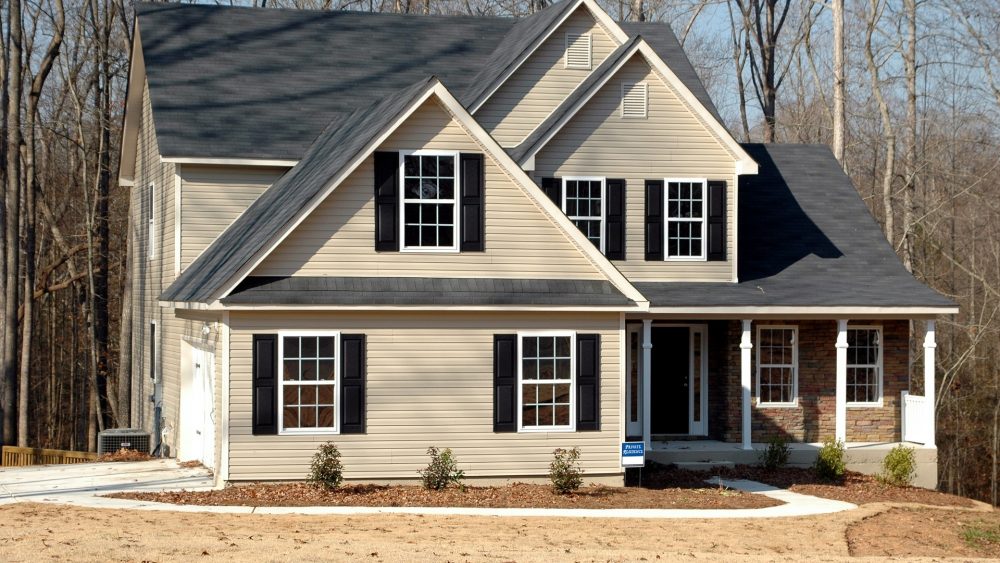As any type of building is constructed, the range of products available for siding can make a decision maker’s head spin. There are pros and cons to each, but an all-in-one comparison of all options can make things much simpler. Look no further—the following will touch on some popular choices available in the market and without any bias, compare each.
Contender #1: Vinyl
What’s it all about? Vinyl siding is a man-made product created from PVC (polyvinyl chloride). Many would even consider this material the most popular in the US. From a cost perspective, buyers see an average material and labor cost for vinyl siding of $6 per SF—to put things in context, this is by far the cheapest product available. It is also easy to install and doesn’t require a heavy time commitment. In a longer-term view, there is minimal upkeep required due to zero painting required. What is recommended, however, is a yearly power washing and on the spot repairs with minor caulking (should there ever be a moisture problem).
On the “con” side of the equation, many people uphold the belief that the aesthetic value of this option is a lesser substitute to alternate textures available. If an object were to collide with the siding, damages cannot be patched and the entire panel will need to be replaced. Commonly, at about a 10-year mark, vinyl starts to become brittle and has a strong potential to fade in its color’s vibrancy. There are even a few environmental concerns due to the manufacturing process of the material, which has led the US Green Building Council to decline their support of its use.
Contender #2: Stucco
From its composition of rigid ingredients like sand, cement, and lime mixture, stucco has a strong resemblance to concrete. Similarly to wood, stucco averages about $10 per SF for its material and labor cost. An interesting feature is the ability to mold the mixture to make any shape or style, which presents some versatility in environments where it is fitting.
An important factor that can lead to trouble if not properly installed is that stucco was originally designed to be installed in extremely dry climates. When used in regions with heavy exposure to water, there are severe consequences of improper installation such as structural issues leading to mold and mildew. Exposure to these hazards can cause concerning health problems, and in order to repair issues leading to mold, decision makers realize substantial costs.
Contender #3: Fiber Cement
Somewhat similar to the mixture contents of stucco, fiber cement is a composite material made of sand, cellulose fibers, and cement—forming a highly durable product of increasing popularity. In a horizontal overlapping fashion, fiber cement siding imitates wood siding, however is sold in sheets. Averaging about $12 for material and labor, this option is a unique way to imitate any siding material desired in a fire-resistant composition. Of all options, fiber cement siding offers the most uncontested ROI due to its durability and overall appearance. On the other hand, installation does require more labor than its alternatives due to weight, so there is a price increase accepted by buyers.
Although there are other options available such as brick, stone, and wood among others, these contenders lay out the most prominent pros and cons that exist in exterior options. Dependent on the use of the structure, there are certainly other considerations that enter into play. Whichever the best option, a well-researched decision making process is always better than picking a number out of a hat. Although one option may be the cheapest or the most expensive, it doesn’t always point toward the desired quality. With the diverse options available, engaging a diverse, experienced general contractor is the ticket to understanding a several siding choices and how they may affect your building usage.
About the Author, Heather Grossmuller.
In partnership with the JH Greene team, Heather works to monitor movement of the construction industry and keep our team on the forefront of customer service. Through close attention to our brand’s presence and its communications, Heather’s role as Business Development Manager is able to serve the team in a way that is relationship-focused and client-centric.
About JH Greene & Son, Inc.
JH Greene is a commercial general contractor and construction manager focused on serving the construction needs of diverse businesses in the Pennsylvania, New Jersey, and Delaware area. Whether a client’s needs pertain to retail, restaurant, office, healthcare or senior living space, our team’s 40+ years of experience gives us a unique perspective to tackle any construction challenge.


Comments are closed.